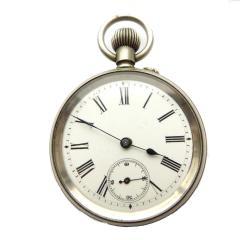-
Recently Browsing
- No registered users viewing this page.
-
Topics
-
Posts
-
Not having all the fancy equipment, this is a way I came up with. I never said it was the best, the most ideal or the safest way. Working on balances is always a delicate task and full concentration & common sense should prevail. I was well aware of the "dangers" / short comings involved, hence my "warnings", as quoted above. The balance wheel of the Omega was nice true, flat and one could clearly see how much gap there was left before the grinding wheel would touch the balance wheel. My idea of penning this article was to show/share a way which, in my case, perfectly succeeded. If deemed to risky, or if the balance wheel is not true or has a wobble, other methods have to be followed.
-
By Neverenoughwatches · Posted
I loved his explanation of a teardown 😅 Ex military Richard Perrett, pretty knowledgeable guy. -
I also see a bit of danger for the wheel, at least you have to keep away from it and may get a too thick rest ring. My rest rings are about 0.05 mm. Better way would be a grinding wheel touching the staff with its circumference. Frank
-
By Neverenoughwatches · Posted
Not easy to find this one everywhere, so it depends where you are located. Joining it back together might be possible, i have silver soldered mild steel before even with traditional plumbers lead and its a pretty strong joint, but bere in mind this is only 1mm diameter. The join would need to be very accurate, it not something i have heard of anyone trying before. The part no 401 is the swiss code number and relates to watch winding stems in general







Recommended Posts